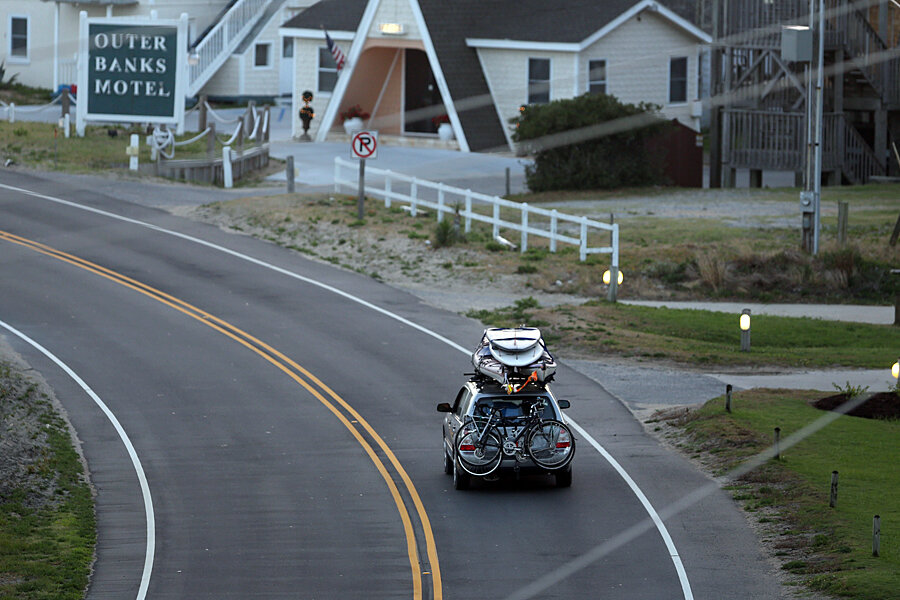N.C. coast under hurricane warning from Arthur, Outer Banks evacuating
Loading...
Hurricane Arthur is bearing down on North Carolina's Outer Banks, where evacuations are under way along the whisker-thin barrier islands popular with summer tourists.
The entire North Carolina coast from Surf City to the Virginia border is under a hurricane warning, according to the latest set of advisories from the National Hurricane Center in Miami.
Tropical storm warnings extend from just south of Surf City to the mouth of South Carolina's Santee River, as does a hurricane watch, and north of the North Carolina-Virginia border to the mouth of the Chesapeake Bay.
As of 5 a.m. Thursday morning, mandatory evacuations had begun on Hatteras Island, N.C., while voluntary evacuation orders were issued for Ocracoke Island, N.C., the smaller of the two and an island reachable only by ferry.
Arthur isn't expected to make landfall at the Outer Banks, but it's forecast to swing close enough to bring storm surges of up to five feet above ground level, hurricane-force winds on Thursday night, and between three to five inches of rain. Isolated areas could see up to seven inches. Tornadoes also are possible along parts of the coast, forecasters say.
In discussing evacuations, North Carolina Gov. Pat McCrory (R) urged visitors not to try to ride out the storm in an effort to get their money's worth from cottages they'd paid for or to otherwise salvage some of their holiday weekend, according to the Associated Press.
"Don’t put your stupid hat on," Governor McCrory said.
Although for now, tropical cyclone watches or warnings extend no farther north than the mouth of Chesapeake Bay, Arthur's approach also is putting another summer vacation spot on notice for a soaking: Massachusetts' Cape Cod. Along with much of the eastern part of the state, Cape Cod could receive two to four inches of rain.
In addition, the cape could see wind gusts of 40 miles an hour or more between 8 p.m. Friday night and 8 a.m. Saturday morning as the center of Arthur passes well east of the cape, according to the National Weather Service forecast office in Taunton, Mass.
The prospect of a Friday-night washout prompted Boston officials to reschedule the city's famous concert and fireworks display to Thursday night, although forecasters caution that the event could be washed out then as well, thanks to the clash between a cold front sauntering through the Northeast and the warm, moisture-laden air ahead of it.
The event is the 85th July 4 concert that the Boston Pops has performed along the Charles River. If Thursday night is washed out, city officials have said the fireworks display could take place Saturday night, but the concert will be scratched altogether.
All along the East Coast, forecasters continue to warn of dangerous rip currents and urge beachgoers to heed signs warning of dangerous surf and to be familiar with techniques for escaping rip currents.
As of 11 a.m. EDT Thursday, hurricane Arthur was located about 87 miles east-southeast of Charleston, S.C. The storm is packing maximum sustained winds of 90 miles an hour. Hurricane-force winds extend up to 35 miles from its center, while tropical-storm-force winds extend up to 115 miles out. It's traveling north-northeast at about 14 miles an hour, double its pace at this time Wednesday.
By 11 a.m. Friday, Arthur is expected to pack top winds of 105 miles an hour, giving it Category 2 status on the Saffir-Simpson scale of hurricane intensity, which goes up to Category 5. By midday Saturday, the storm's maximum sustained winds are still expected to be at hurricane levels, but it is forecast to lose its tropical-cyclone characteristics and morph into a powerful extra-tropical cyclone.








